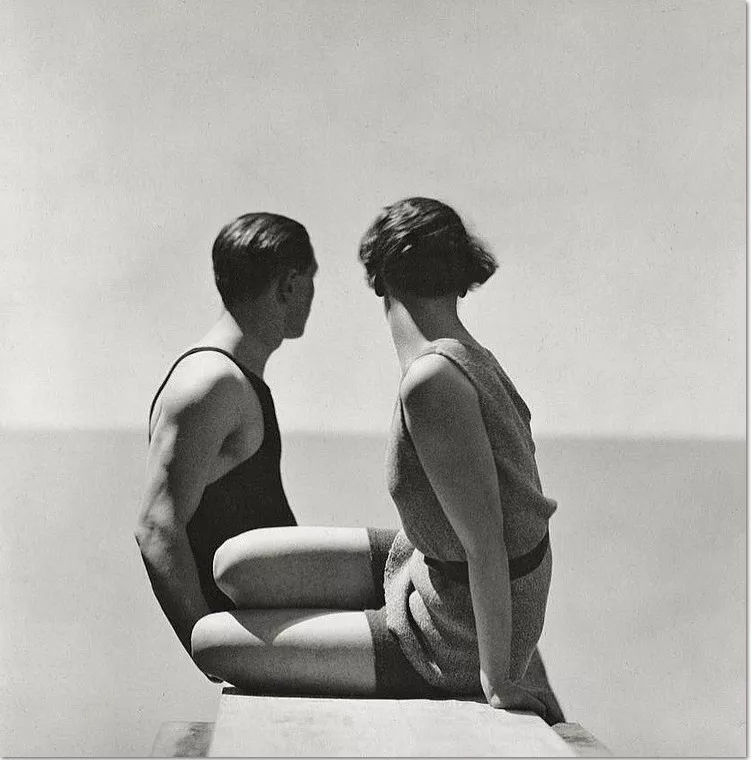George Hoyningen-Huene: “Divers (Horst With Model)”, 1930, (Swimwear by Izod), platinum-palladium print, blindstamped in the margin, signed by Horst and title, date, edition ‘AP 3/3,’ and annotation ‘From The Collection of’ in pencil on the reverse, 1930, printed later by Salvatore Lopes ( Eye for Elegance , p. 39; Ewing, pl. 66) 19 by 14¾ in. (48.3 by 37.5 cm.). Not available
About the Artist
George Hoyningen-Huene (1900 – 1968). Born in a Russian aristocratic family, George Hoyningen-Huene fled the Revolution and settled in Paris where he would soon become a prominent photographer for French Vogue, from 1925. In the mid 1930s, he moved to New York where he collaborated with Harper’s Bazaar before establishing himself in Hollywood in the early 1940s. With his flawless poses and settings alongside a mastering of light and shadows, the Russian photographer marked the interwar years with his elegant portraits influenced by those of Edward Steichen and Greek sculptures. Nonetheless, he introduced a sense of surrealism to his images with the use of incongruous objects, artistic blow-up backgrounds, giant hands or horse heads mingled with classical columns while he became the first to capture his models from above to resemble Greek friezes. After World War II, George Hoyningen-Huene gave up fashion photography concluding that elegance had ended with the destruction of much of Europe and thus adapted his sophisticated touch to cinema stars.
_____________________________________
See more famous photo artists of this time: Man Ray
